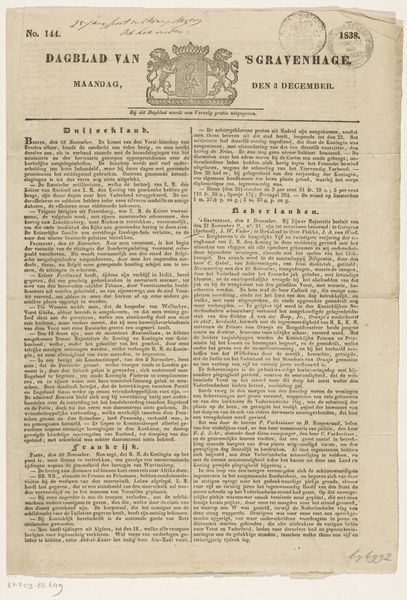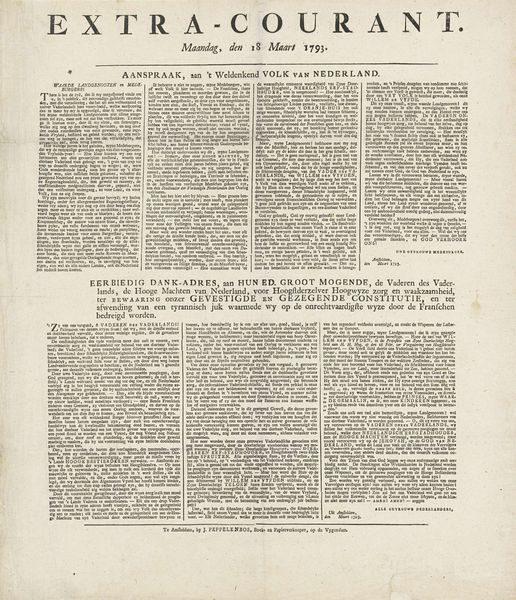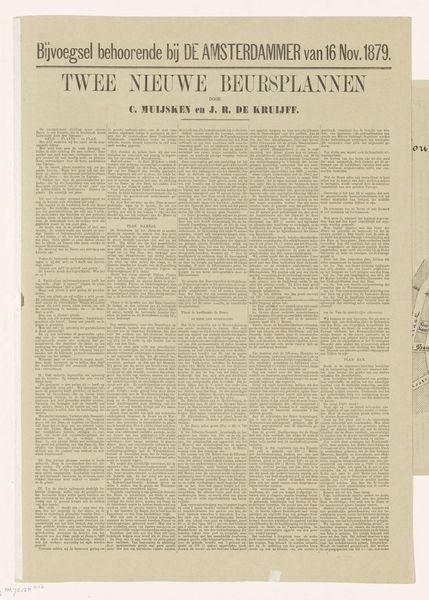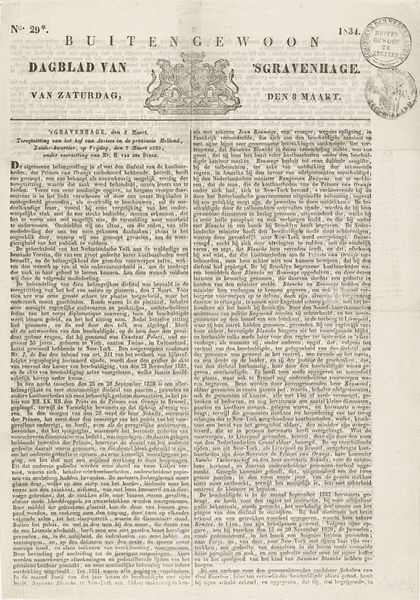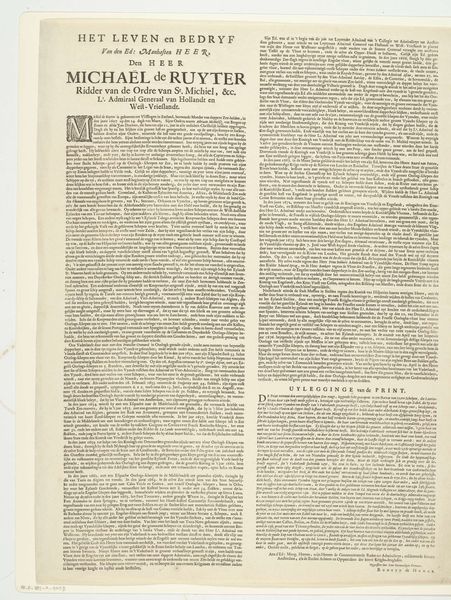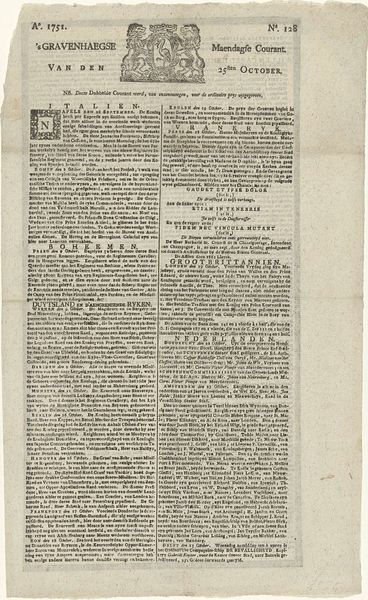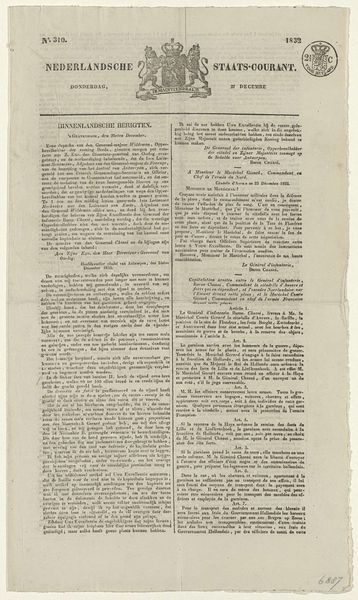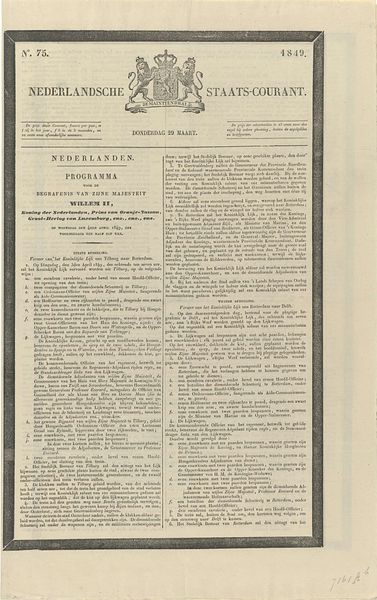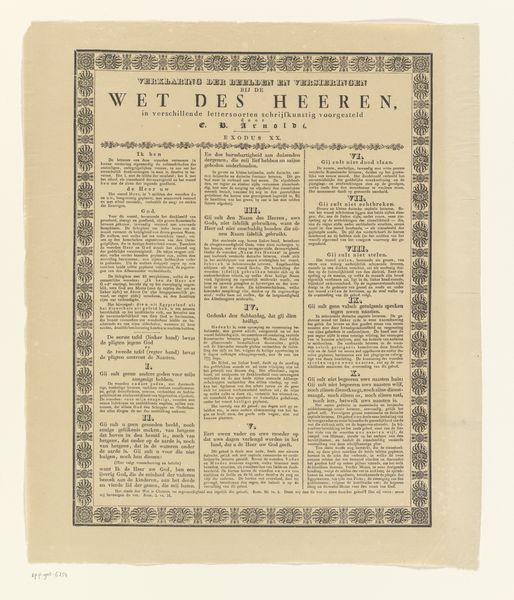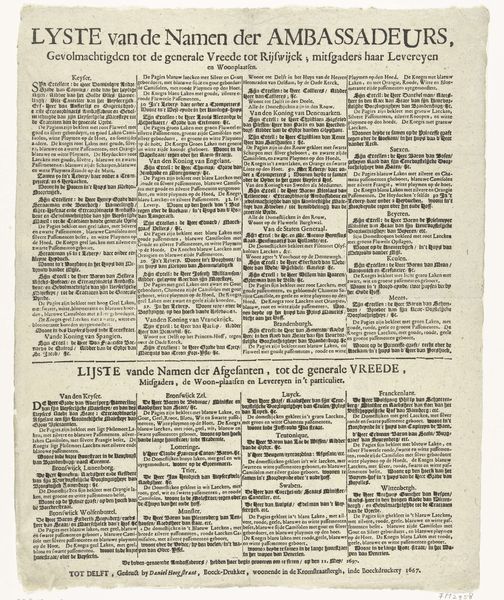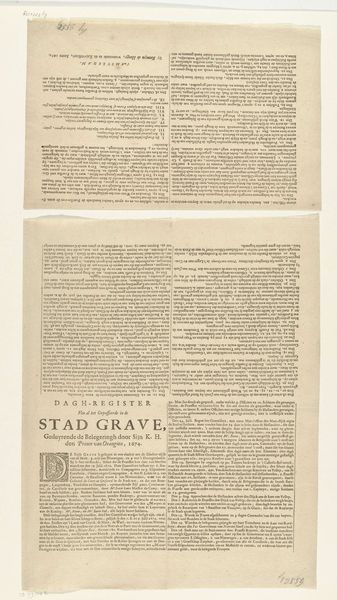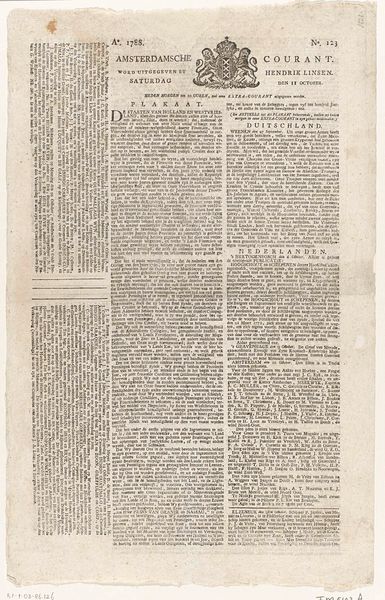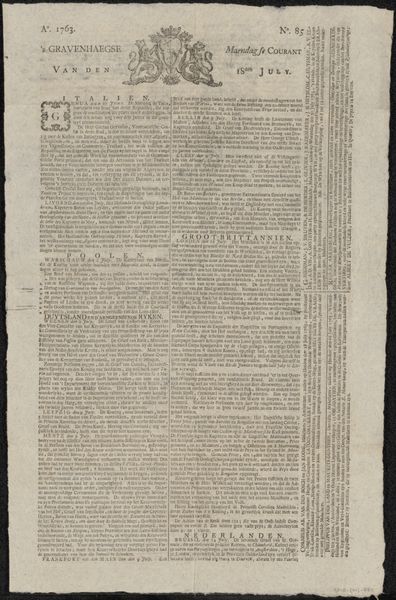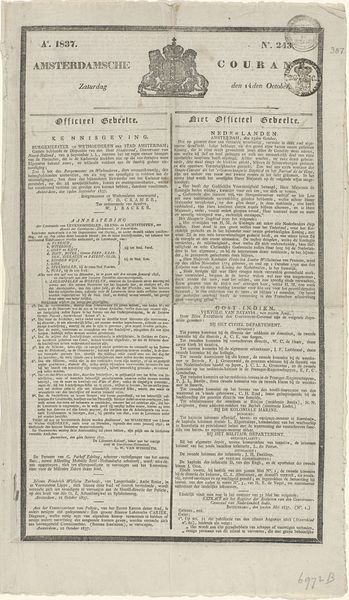
Krant met een artikel over de begrafenis van Willem III, koning der Nederlanden, op 4 december 1890 Possibly 1890
0:00
0:00
print, textile, paper, photography
#
portrait
# print
#
textile
#
figuration
#
paper
#
photography
#
newspaper layout
#
history-painting
#
realism
Dimensions: height 604 mm, width 463 mm
Copyright: Rijks Museum: Open Domain
Curator: This is an image of a newspaper page from the *Nieuwe Rotterdamsche Courant*, likely published in 1890, reporting on the funeral of King Willem III of the Netherlands. Editor: Immediately, the sheer density of text overwhelms. The layout is tight, almost claustrophobic; the visual hierarchy pushes you down rather than guiding you through. It certainly conveys the gravitas of the event, but it feels very formal, rigid, perhaps even oppressive in its visual weight. Curator: Absolutely, the visual impression echoes the weight of tradition. Newspapers, particularly during this period, were vital carriers of cultural memory. They weren’t just delivering news but shaping the collective understanding of national events, solidifying the monarchy as a national symbol. The layout reflects an order, a structure of authority, not just in the monarchy itself, but also in the journalistic enterprise. The visual rhetoric implies lasting order, and enduring power even in the face of death. Editor: I'm struck by the black and white, the absence of color – that starkness contributes to the sense of mourning, of historical record. But what's also noticeable is the implicit trust in text; words are both image and substance. It speaks to an era where information, mediated by print, held an almost sacred power. Each headline, each carefully constructed sentence, acts as an emblem, carrying with it cultural assumptions about death, nation, and royal continuity. Curator: Precisely! And note how the headline acts almost like an icon – announcing a shift, but reinforcing permanence at the same time. Royal deaths function as cultural anchors, reminding the populace of shared history. The symbols become reified—that printed announcement *is* the event for a large segment of the population. Even the advertisements surrounding the text can give insight into the moment—what mattered at that point in time? Editor: Yes, analyzing the typographical elements as ideological carriers… this simple newspaper page offers a profound semiotic reading into Dutch society at the end of the 19th century, when traditions of print shaped and transmitted beliefs about legacy and change. Curator: Considering the psychological impact of recurring symbols – how the image of monarchy intertwined with national identity is intriguing… Editor: Ultimately, it’s about layers: not just an image of text but the historical imprint within the page itself.
Comments
No comments
Be the first to comment and join the conversation on the ultimate creative platform.
